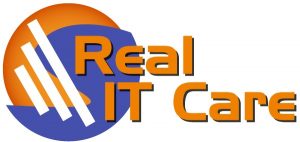Based on research from Computer Economics, organizations that have fully or largely migrated their ERP and other solutions to the cloud spend less on IT as a percentage of revenue and on a per-user basis. Savings come not only from a reduction in data center spending but also from lower IT personnel costs. Moreover, because cloud-based systems reduce the effort needed for ongoing support, cloud users are able to devote a higher percentage of their IT spending to new initiatives. The cost savings, combined with strategic benefits in speed, scalability, and agility, argue in favor of organizations moving aggressively to the cloud. This presentation will summarize these research findings.
Join Frank Scavo of Computer Economics, an independent IT research firm, as he explores the economic and strategic benefits of cloud computing with an emphasis on Cloud ERP.
Attendees will learn:
- Benchmarks showing the cost savings that organizations typically achieve when migrating to cloud systems
- The strategic benefits that companies gain with Cloud ERP in addition to the cost benefits
- Practical recommendations to ensure the realization of benefits in migrating to Cloud ERP
Everyone that attends the live webinar on June 27 will receive the Computer Economics Research Report, “The Economic and Strategic Benefits of Cloud Computing” (retails for $995 on Computer Economics).
Speakers
 Frank Scavo, President, Computer Economics
Frank Scavo, President, Computer Economics
Frank Scavo is the President of Computer Economics, an IT research firm based in Irvine, CA, where he covers the enterprise software industry. In addition to his work as an industry analyst, he has been leading ERP selection projects for clients since 1989. Frank is a graduate of the University of Pennsylvania and a Certified Fellow in Production and Inventory Management (CFPIM) by APICS, the association for supply chain management.
 Tom Brennan, CMO, Rootstock
Tom Brennan, CMO, Rootstock
Tom Brennan is Rootstock’s CMO. Tom has 30 years of professional experience working in ERP and for business software companies. He has been a long time evangelist of cloud computing and has held many executive roles including several years as the Senior Vice President of Marketing at FinancialForce.

Register
By clicking above, I acknowledge and agree to Informa’s Terms of Service and to Informa’s use of my contact information to communicate with me about offerings by Informa, its brands, affiliates and/or third-party partners, consistent with Informa’s Privacy Policy. In addition, I understand that my personal information will be shared with any sponsor(s) of the resource, so they can contact me directly about their products or services. Please refer to the privacy policies of such sponsor(s) for more details on how your information will be used by them.



 businesses ensure raw materials are available to production, manage the manufacturing process, maintain revisions, and track the financials.
businesses ensure raw materials are available to production, manage the manufacturing process, maintain revisions, and track the financials.

 Frank Scavo, President, Computer Economics
Frank Scavo, President, Computer Economics Tom Brennan, CMO, Rootstock
Tom Brennan, CMO, Rootstock